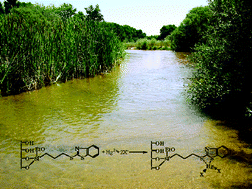Mesoporous silicas (SBA-15 and MCM-41) have been functionalized by two different methods. Using the heterogeneous route the silylating agent, 3-chloropropyltriethoxysilane, was initially immobilized onto the mesoporous silica surface to give the chlorinated mesoporous silica Cl-SBA-15 or Cl-MCM-41. In a second reaction a multifunctionalized N,S donor compound (2-mercaptobenzothiazol) was incorporated to obtain the functionalized silicas denoted as MBT-SBA-15-Het and MBT-MCM-41-Het. Using the homogeneous route, the functionalization was achieved via the one step reaction of the mesoporous silica with an organic ligand containing the chelating functions, to give the modified mesoporous silicas denoted as MBT-SBA-15-Hom or MBT-MCM-41-Hom. The functionalized mesoporous silicas were employed as adsorbents for the regeneration of aqueous solutions at pH 6 contaminated with Hg(II) at room temperature. Results obtained indicate that mercury adsorption was higher in the mesoporus silicas prepared by the homogeneous method, and the maximum adsorption value (0.24 ± 0.02 mmol Hg(II) g−1) was obtained for MBT-SBA-15-Hom. The chemically stability in acid medium of the functionalized silicas, possibility its regeneration washing with concentrate HCl, resulting in the reuse of the adsorbent material for several cycles.

You have access to this article
 Please wait while we load your content...
Something went wrong. Try again?
Please wait while we load your content...
Something went wrong. Try again?


 Please wait while we load your content...
Please wait while we load your content...